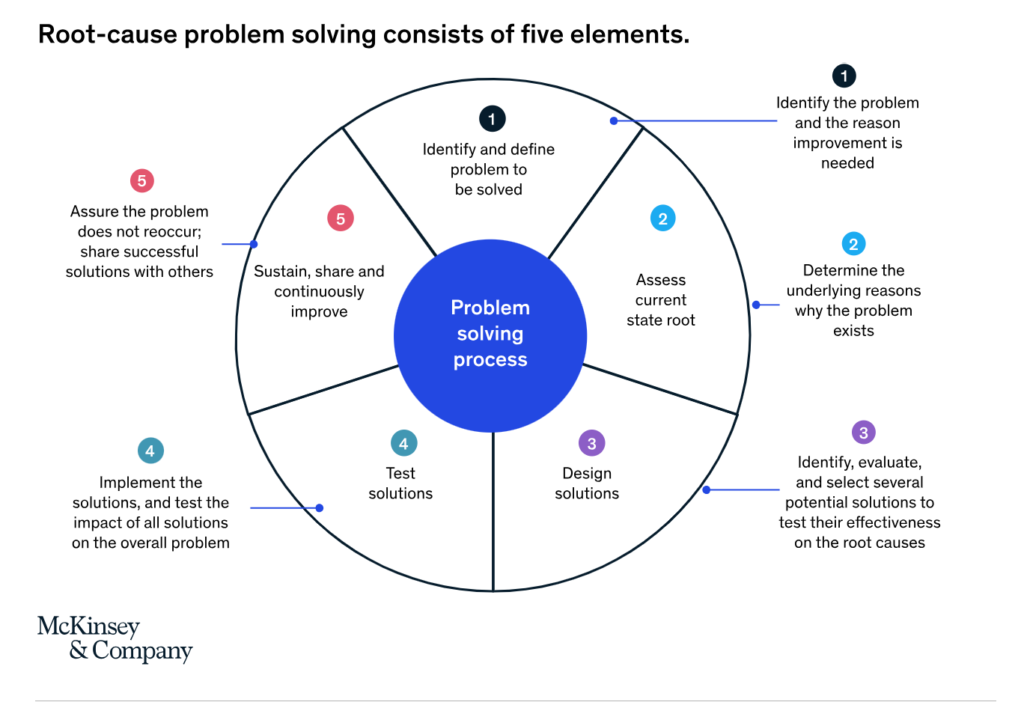@2021 invictIQ is a venture by Sprint Consultancy. All rights reserved. Privacy Policy.

Revealing Hidden Factors in Care: Mastering Root Cause Analysis
by Mark Topps
Root Cause Analysis (RCA), is a method used to identify the underlining cause or reason of why a problem or issue occurred.
RCA is indispensable for the care sector due to its profound impact on delivery of care, safety, and overall operations. By systematically uncovering the underlying causes of problems and incidents, care providers can make informed decisions, enhance care quality, mitigate risks, and ensure compliance with regulations. Moreover, RCA fosters a culture of continuous improvement, empowering team members, and ultimately leading to better resource allocation and cost-effectiveness. In a sector where trust, safety, and quality are paramount, RCA emerges as a critical tool for achieving these vital objectives.
I have spoken to a couple of care managers recently about how to complete a root cause analysis and thought I would share a four-step, easy to understand blog.
Problem Identification
The first step is simple, and there is no reason to overthink it. Identify the problem.
It may be that this is something that has been bought to your attention by someone you support or a colleague, it may be something identified in an audit, it could be visible or it could be something that is slightly harder to locate but you have a gut feeling that something isn’t right.
Investigate Further
Once you have identified the problem, now it is time to investigate further.
Very rarely is the first thing you find the only thing, and I like to think of root cause analysis as a tree. Step one was locating the tree and this second step is now digging deeper to unearth the roots.
Behind each problem, it is likely that the more you investigate (or dig) you will find other things that are leading to the problem (the roots). It is important that you document all the things you find so you do not forget them.
The Why’s
The word ‘why’ should become your best friend when undertaking root cause analysis. It is based on a theory created by Sakichi Toyoda (founder of Toyota) which found that asking the question ‘why’ five times, gets you to the real root of a problem. Let’s look at how this works:
- Ask the first ‘why’ – ask your team why the problem/issue is occurring/did occur. This sounds easy, and it really is. This question will allow your team to think and come back to you with answers. It is important that they come back with facts and not opinions or guesses. Make sure you record the responses that they give in sentences, and not one worded answers.
- Ask ‘why’ again – take the reason the employee has given and ask why based on what they have told you.
- Repeat step b, three more times – it is important to note that you may not need to ask it five times to get the root cause, and it may be that you need to ask why a lot more times, depending on how many people are involved and the responses you get from each.
Let’s look at an example:
- Question: Why did Gemma not receive her payslip?
Answer: Because the payroll system failed.
- Question: Why?
Answer: Because the system was doing an update at the time payslips are normally generated
- Question: Why
Answer: Because it was planned by the payroll system provider and we didn’t notice.
- Question: Why
Answer: They emailed to let us know, but I have been too busy covering the floor so we weren’t short staffed and I missed the email.
To get to the root cause of why Gemma didn’t receive her payslip, we only had to ask ‘why’ four times. It is important to know when to stop and it should be apparent when you have revealed the root cause as you will not receive a useful response. It is at this stage that you do not need to continuing asking ‘why’.
There are many great resources on the internet about the ‘five whys’ and more recently the ‘three whys’, so make sure you go away and do some further reading. Many people have also been able to convert the why theory to their benefit when making a big decision as it allows you to dive deeper and see if you should continue to move forward.
Many problems and issues tend to have multiple causes and hopefully these will come out when you are asking the ‘why’ to your team.
Prevention and Solutions
Once you have gotten to the root cause to the issue/problem, you will be in a better position to be able to make some changes. As the changes you are making are based on facts, you are able to make informed decisions which should in turn help reduce and/or prevent the problem/issue from happening in the future.
In summary, Root Cause Analysis allows you to get to the bottom of why something has happened. It arms you to make decisions based on facts, rather than guessing and this will mean that you are implementing practical and long lasting solutions.
All you really need to take away from this blog, is the power of the ‘why’.
MORE ARTICLES

Mark Topps is a social care leader who has worked in the care industry since 2004 and is currently working as a regional support manager. He regularly advocates, appearing on television, radio and podcasts and has started many campaigns for change in legislation and culture within the industry. Mark is the co-founder of The Caring View which is a social care podcast, YouTube show and free resource initiative for the sector. He also co-founded The Health and Social Care Club, which is an audio event hosted on LinkedIn. Mark is also the social media and marketing director at the National Association of Care and Support Workers.
Share
Sign up for our newsletter

